I came across this article recently, and it made me think:
Classic Ford Cortina dubbed ‘most significant vehicle EVER’ hits auction for eye-watering price
“Most significant vehicle ever?” Ah don’ theenk so, Scooter.
Granted, the Cortina Mark 1 was a sensation when it first came out in Britishland, despite being as ugly as sin and underpowered.
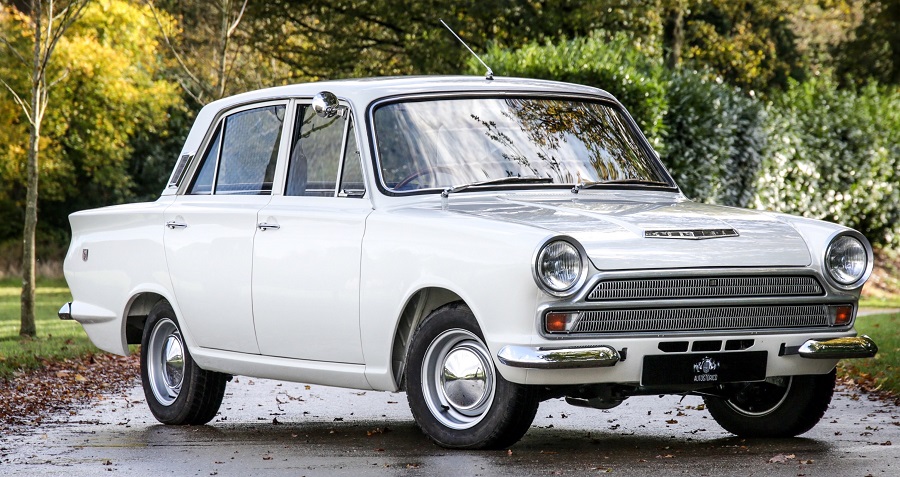
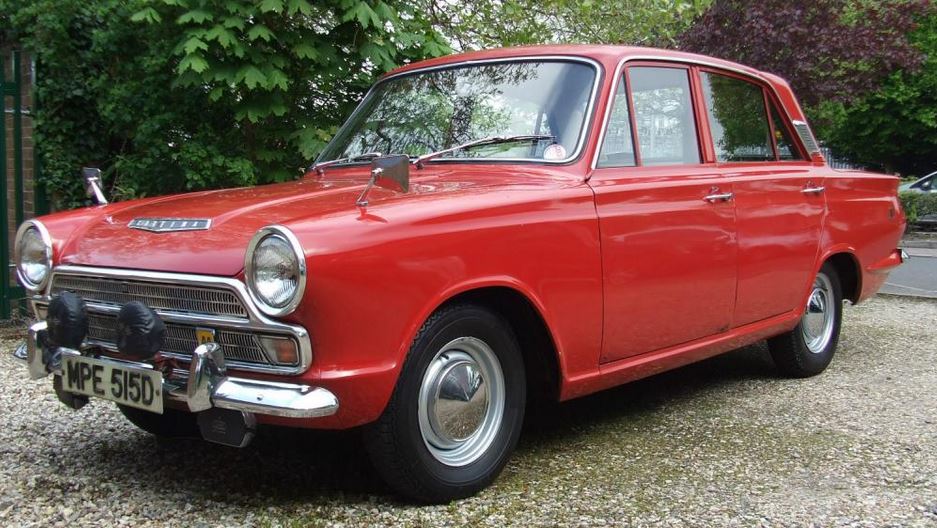
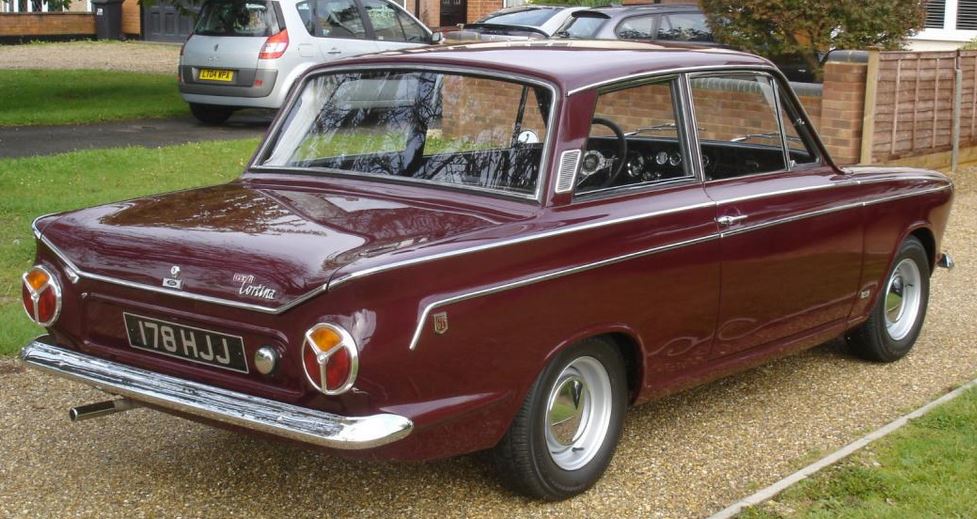
But (and I can attest to this, having driven more than one in my life) they were fun to drive, in no small part because of their all-syncromesh gearbox (a real innovation for the time). Sure, that 1200cc (later 1500, then 1600cc) four-banger was not a muscle-car engine — the peppiest version, the GT, developed a manly 78 bhp. But of course, because the Cortina wasn’t encumbered with all the safety-Nazi bullshit of the modern era, its curb weight of only 1,700 lbs made it very nimble (at about 100 bhp per ton).
And now to the point of this post. I will acknowledge up front that the Ford Cortina Mark 1 may very well have been one of the most significant cars of 1960s Britain.
What, O My Readers, do you think was the most significant American car of the 1960s?
Included would be its technical advances, its effect on car drivers’ psyches, its effect on future car design, or whatever you think would constitute “significant”.
Not having grown up Over Here, my guess would be the 1965 Ford Mustang pony car:
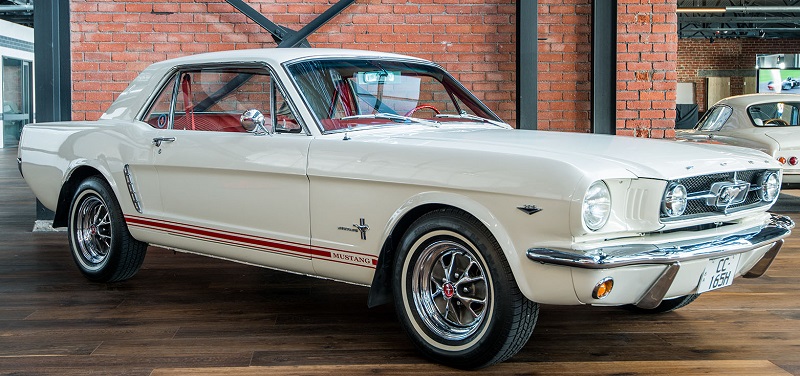
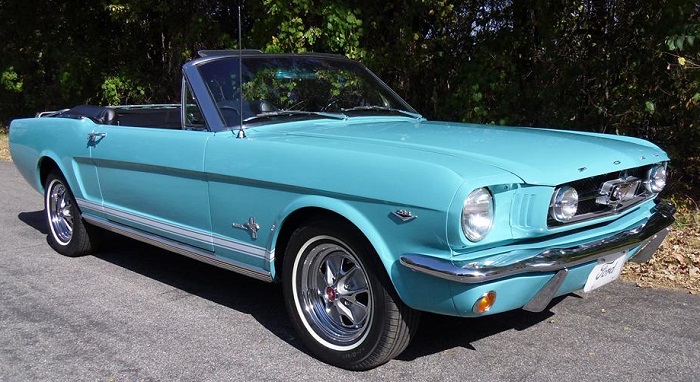
…but I will willingly accept some rebuke from devotees of other cars of that decade.
Off you go to Comments, and show me the error of my ways.

Significant ± equals memorable. In Seffrica the Cortina was a good vacuum-cleaner. I remember Koos Swanepoel and Basil van Rooyen in their Cortinas whipping the pants off Bob Olthoff in his Mustang. (The pony didn’t like corners much.) But the Mini was a truly class act.
It’s been said if you remember the sixties you didn’t experience them, so, since I do remember them, I may be disqualified from commenting on the most significant American car of that decade. However, I disagree with premise and will comment away.
You are right; it was the Mustang.
Its look was a break with what had come before and was totally American.
In about June 1965 when they were still rare I saw one with a crumpled render and was momentarily upset to see that that car could suffer insult like any other; it was NOT RIGHT!
Alas, I was a college student almost the entire decade (I entered my freshman year in 9/61 and finished my Ph.D. in 6/69.) and never owned one. Among my many flaws, I still haven’t.
I’ve driven a couple, admittedly with six in line engines not V8. Once you’re inside and you can’t see the incredible styling with those muscular haunches, the car is… okay.
CD, Kim will tell you where Benoni is (hint birthplace of Charlize Theron whoever she is) and the bored apprentices at the foundry threw a couple of castings to fit a Honda CB 500 engine into a Mini. Fifty brake horses versus thirty-something in a standard Mini. That thing fucked off at high speed.
Agreed again.
In its first years it was a typical smallish American car made interesting by the artists in the styling shop. Ford soon realized that they could do even better if they offered real steak in addition to the sizzle and did so.
My midlife crisis is arriving late, but I’d like to own one with something less than the 5 L engine (I don’t have a death wish and do have an idea that my skills may have atrophied with age.) and the six speed anti-theft (i.e., manual) transmission.
Due to style and marketing the Mustang was probably the most popular car of the late 60’s. In 1972, at age 17, I had a 1966 Mustang convertible with the 289 that had a 4 bbl carb. I learned a lot about mechanics with that ride. Remember when people used to “fix” starters and alternators? Now a days everybody pays outrageous sums for parts changers to yank em and throw em and install new ones. With a handful of wrenches and a couple screwdrivers you used to be able to fix almost everything. Now, the landfills are slammed with plastic unfixable shit.
“Remember when people used to “fix” starters and alternators?” And generators.
A partner and I had a rebuild shop doing just that. Unfortunately our timing was poor. There was a time when Ford, GM, and Chrysler alternators and starters were pretty much standard to each line. A rebuild shop could keep units on the shelf and expect a decent rate of turnover. That was coming to an end when we got started. Thanks to computer CAD and some other factors, units became specific to individual model cars, and it became impossible to maintain any kind of shelf stock due to the myriad of variation. Also became increasingly more difficult to keep parts in stock to insure a decent turn around time.
During the mid-70’s, I owned a 1970 BMW 2002 (bought used). Among other mods, I installed a Weber carb and a header. I get the part about nimble.
I remember reading once that some auto magazine writers were discussing this topic and the one surprising suggestion was the Dodge Dart / Plymouth Valiant, specifically the 4-door model with the slant six and automatic transmission. Room enough for the family, reliable, easy to operate, relatively safe (for the standards of the time), low cost to purchase, decent economy to operate, low maintenance, and if it ever did break you could fix it with a bit of bailing wire and duct tape. It was truly the “people’s car” in America at the time.
Thing is, none of that is generally considered “significant” when people start listing off what they think is important. But when you gotta put your own money on the line, it can certainly become significant.
But yeah, I kinda want a Mustang too. As a second vehicle.
I seem to recall Lee Iacocca having a hand in the Mustang, and expressing surprise that it took off like it did. I saw an interview with him where he kind of shook his head & observed that it just a Ford Falcon with different lines. Similarly, the Barracuda was essentially a Valiant converted to a fastback.
I’ll second this. I had a Plymouth Duster (same car as 2 door fastback) with the slant 6. I did every repair that car needed except changing the shocks and replacing a broken (yeah they broke) torsion bar. I had a friend who took a Dart ‘Custom Six) and put a Chrysler 340 racing engine and 4 speed manual in it. He left the Custom Six logo and had fun blowing the doors off of ‘hot cars’.
over the course of my troubled and misspent youth, I probably changed out a dozen or so torsion bars. Yeah, they broke often, especially when they were 20 years old or so and had kids running the cars ragged. a holy bitch to remove and even more trouble to set up correctly.
Above I admitted two things:
1. I agreed with the proposition that the Mustang was the significant American car of the sixties, and
2. I’ve never owned one.
Now for the third admission….
I did buy a Dodge Dart Swinger just past the end of the sixties (9/1970). It was very close to that defined as the car of the era by the writers; the only differences were that mine was a 2 door and had three on the tree. Its bullet proof slant six was drinking a quart of oil with every tank of gas in 1983 when it had about 100,000 miles on it but it started up and ran every time I asked it to. It was traded in then because my wife didn’t like watching the road go by under us through the rusted out floorboards.
The first car I remember was my Dad’s ‘72 Dodge Dart Swinger. He loved that car and, if I recall his stories, it had a 318 V8 in it. He traded it for a ‘78 Plymouth Volare station wagon when kid number 4 came along. It broke his heart.
Crikey, that Ford Cortina looks like something the Soviets would have produced. I can’t argue with anointing the Mustang as you have, but I have a soft spot for the Barracuda. Bearing in mind I wasn’t spawned til ’63 & didn’t own my 65 Cuda until the mid 80s. When I bought it had the 225 slant 6 – perfectly bulletproof & reliable & soul-crushingly boring. I later acquired a 273 V8 that was optional that model year & swapped it out. A TON of fun once we got it dialed in.
Not as much fun when the car was stolen from me, and then recovered about a month later. After the recovery, the cops didn’t take it off their hot sheet & I was treated to a full felony stop:
“DRIVER! THROW YOUR KEYS OUT THE WINDOW! DRIVER! EXIT THE VEHICLE WITH YOUR HANDS IN THE AIR! DRIVER! WALK BACKWARDS TOWARDS THE SOUND OF MY VOICE! DID I TELL YOU TO PUT YOUR HANDS DOWN, MOTHERFUCKER??!!??!! FACE DOWN ON THE PAVEMENT! NOW!!!
Good times.
Drag racing down main street, ended up both me and the other guy got pulled over. Both cars full, so cops line us all up, grab our id’s, and go back to the squad car to call them all in. As they’re calling them in, one of the guys from the other car starts telling us, don’t make no sudden moves, don’t be stupid, do exactly what they say, cause it’s about to get real. Turns out he had felony warrants and as soon as they got to his id we got the full treatment – HANDS IN THE AIR! TURN AROUND _ BACKS TO US! DON’T FUCKING LOOK! ON YOUR KNEES! So on and so forth until they got it all sorted out. Fun times. Big ticket.
For commuting to the local community college, Dad bought me an 850 Mini, BFN!
One of the other guys in marching band, had a new Cortina, and we used to stage a drag race to entertain the other members of the band. They never could stifle their amazement at watching the front wheels of the mini start to spin and chirp.
Then, there was the contest to see how many people could stuff themselves into the Mini v. Cortina.
Wasn’t there something known as a “Cosworth” Cortina? Or am I thinking of some other English Ford?
Maybe the Cortina was “one of” the most significant cars in 60s Britain … maybe. The Mini leaves it standing, though (and my parents had both, so this is to an extent from personal knowledge).
Where the Cortina was fairly conventional in most respects other than styling, as a front engine, rear wheel drive saloon, the Mini was innovative. It had a transverse mounted engine driving the front wheels, which shortened the engine compartment and eliminated the transmission tunnel. That and some other changes gave it more internal space for its weight and size. The wheels were right out at the corners, giving it a relatively long, wide wheelbase for its size leading to improved handling. True, the “isolastic” (rubber) suspension was not great and was eventually dropped, but with that many innovations you can’t expect total success. As for influence on subsequent designs, pretty much every small to medium car nowadays is basically a re-styled Mini.